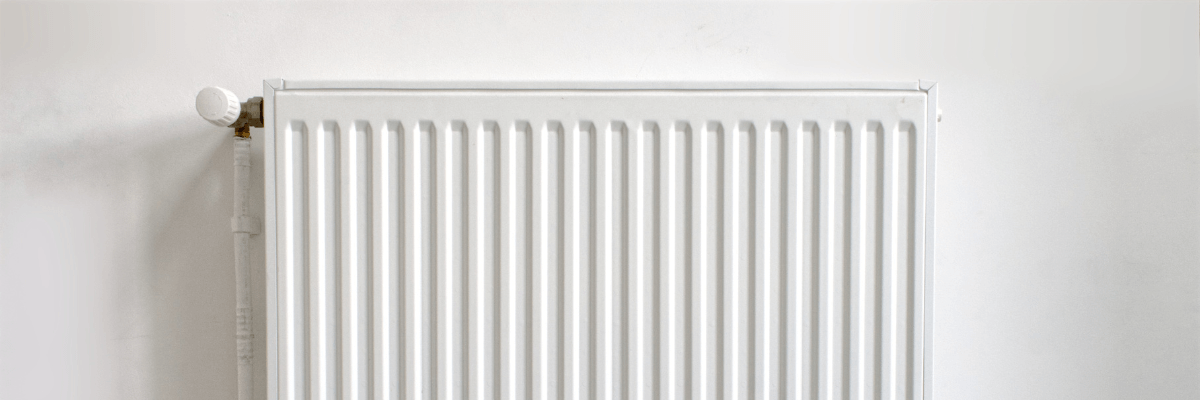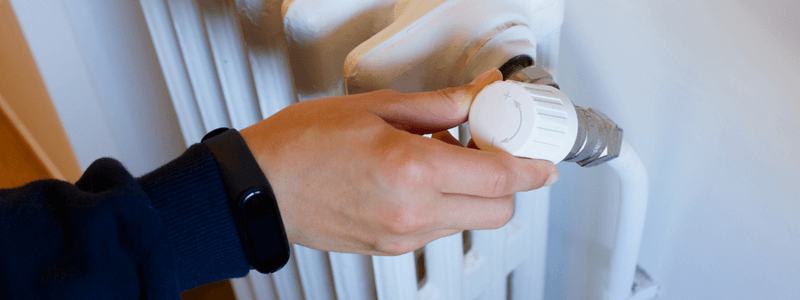
How to Maintain Your Radiators
When was the last time you bled your radiators? Or check that the thermostatic valve settings were optimised?
Come winter, your radiators are key to keeping your home in good condition. Not only do they keep you warm, but heating your home can also limit damp, mould and other similar issues.
Most homes today have a central heating system, including radiators. Radiators should be checked and maintained regularly, especially during the winter months.
If your boiler stops working or your radiators aren’t pumping out enough heat to warm your entire home, Speedy has a range of heating solutions available to boost heat. But to save money and energy, you still need to check your radiators are working correctly.
Below is your ultimate radiator maintenance guide.
Keeping your radiators in good condition
- Bleed radiators once per year
If your heating system or radiators contain trapped air, they need bleeding. You can tell if trapped air is present as the top half or so of the radiator probably won’t feel warm (if it is warm at all).
Your pipes may also sound as if they are banging, and your radiators may gurgle.
It is a good idea to bleed radiators annually, in autumn, just before winter kicks in. However, bleed them as and when needed.
Wear eye protection just in case the air escapes quickly, or water splutters out, and cover all of your skin, including wearing gloves to protect your hands.
You will need:
- Radiator bleed key
- Cloth (to catch leaks)
- Container (to catch water)
Ensure the central heating is off and place the container at the radiator's base, underneath the radiator valve's position. Use the radiator bleed key to turn the radiator valve anti-clockwise very slowly.
Listen for any air escaping, like a hiss. As soon as the water starts to run out instead, turn clockwise again to tighten.
Repeat on other radiators. Then, check your boiler pressure (by looking at the pressure gauge) and top up if needed. Now, you’re free to use your central heating again.
- Check radiators for leaks
You should also inspect pipes for leaks and cracks annually. This can happen when pipes suddenly have to start working in cold weather and expand, but older radiators are also prone to damage.
Leaks can be easy to fix but may also require a plumber. In the worst-case scenario, you may need to replace your radiator.
Don’t panic—Speedy has a wide selection of temporary heating solutions available for hire if you need to do without your central heating for a few days.
A leaking radiator will cause your boiler to lose pressure faster than normal, reducing your heating effectiveness. It can also cause damage to floors.
Check where the water is coming from first. If it is a valve, tighten it with a radiator key or spanner. Tighten the bolts with a spanner if it is between a valve and a pipe.
Have electric radiators? Call a professional instead. They’ll likely need replacing.
- Keep radiators clean
Radiators can get surprisingly dusty and dirty. Dust can build up between the panels, making it hard to get out.
You can use a powerful hairdryer to try to blow it through to the floor from the top of the radiator. Then, use a vacuum to collect the dust.
Give radiators regular dust with a dry cloth, too. If you need something damp, use a wipe that can remove grease and dirt but is safe for paint or metal, such as the OX Biodegradable Eco Wipes.
SPEEDY TOP TIP: Have you seen videos on TikTok and Instagram of people pouring water between radiator panels to push out dust? DON’T DO THIS. It can cause radiators to rust, reducing efficiency and increasing the risk of damage and leaks.
- Check the thermostatic radiator valves
The thermostatic radiator valve (TRV) can be turned to minimise or completely turn off heating to a single radiator.
They should be on every radiator in your home except in the same room as the main thermostat.
A TRV can turn the heating off in singular rooms that aren’t being used or warm enough (such as kitchens). You may also have to turn off a radiator if furniture is nearby.
Check this valve before anything else if a radiator doesn’t feel warm. The TRV on each radiator is commonly set to number three, providing a room temperature of around 20°C. Turn it up if you need more warmth.

- Assess the boiler temperature output
In a modern combi boiler, the radiator heating temperature should be set around 70°C, no lower than 60°C and no higher than 80°C. The temperature can be reduced in spring and summer to around 50°C.
The boiler will output heat at around 20°C if this is what the TRV suggests before the water returns to the boiler. This way, it doesn’t require too much energy to reheat.
Then, the TRV can control each individual room. The higher the temperature, the quicker your home will heat. But don’t go too high because that will decrease efficiency.
Refer to your boiler’s manual if you doubt the best temperature, and contact a gas-safe engineer for advice regarding your heating system.
SPEEDY TOP TIP: Hot water should be set around 45°C to 50°C. Turn it down a bit if it is too hot to run a bath without using the cold tap!
And finally…
Are your radiators in the correct position in your home and room? Try not to have them too near windows, as this heat can get lost. The same applies to internal doors, which can trap heat and stop it from flowing into the room.
Keep furniture away from blocking radiators; this includes long curtains.
If you need to contact a professional to move radiators, it could help save money in the long run and make your home more attractive if you come to sell it.
IS THERE HEATER HIRE NEAR ME?
Yes. Speedy Hire, the UK's leading tool hire company, have a range of portable heaters for hire nationwide for use at home or in the workplace.
Speedy has more than 200 service centres nationwide, hire counters in selected B&Qs and nationwide 4-hour delivery; heater hire has never been easier.
Open a Speedy account online today for faster checkout, personalised pricing and access to our core hire range.
- 2024
- 2023
- December 2023 (13)
- November 2023 (10)
- October 2023 (6)
- September 2023 (10)
- August 2023 (20)
- July 2023 (21)
- June 2023 (17)
- May 2023 (17)
- April 2023 (17)
- March 2023 (14)
- February 2023 (15)
- January 2023 (7)
- 2022
- December 2022 (6)
- November 2022 (12)
- October 2022 (24)
- September 2022 (14)
- August 2022 (12)
- July 2022 (15)
- June 2022 (18)
- May 2022 (14)
- April 2022 (9)
- March 2022 (5)
- February 2022 (5)
- January 2022 (2)
- 2021
- December 2021 (7)
- November 2021 (10)
- October 2021 (1)
- September 2021 (1)
- August 2021 (3)
- July 2021 (3)
- June 2021 (4)
- May 2021 (1)
- April 2021 (1)
- March 2021 (2)
- February 2021 (1)
- January 2021 (1)
- 2020
- 2019
- 2017
- 2016
- 2014
- 2013
- 2012
- 2011


